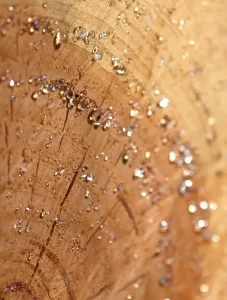Weatherproof decking boards are an essential component for any outdoor space that requires durability and longevity. Whether you are building a deck, patio, or porch, choosing the right decking boards is crucial to ensuring your investment lasts for years to come.

1. Composite Decking
Composite decking is a popular choice for outdoor spaces due to its durability and low maintenance. Made from a combination of wood fibers and plastic, composite decking is resistant to rot, warping, and insects. It is also resistant to fading and staining, making it an excellent choice for areas with high foot traffic. Composite decking comes in a variety of colors and textures, allowing you to customize your outdoor space to your liking.
Advantages: Composite decking requires little maintenance and is resistant to rot, warping, and insects. It is also available in a variety of colors and textures.
Disadvantages: Composite decking can be more expensive than other types of decking boards.
2. PVC Decking
PVC decking is another weatherproof option for outdoor spaces. Made from 100% plastic, PVC decking is resistant to moisture, insects, and rot. It is also fade-resistant, making it an excellent choice for areas that receive a lot of sunlight. PVC decking comes in a variety of colors and textures, allowing you to customize your outdoor space to your liking.
Advantages: PVC decking is resistant to moisture, insects, and rot. It is also fade-resistant and available in a variety of colors and textures.
Disadvantages: PVC decking can be more expensive than other types of decking boards.
3. Aluminum Decking
Aluminum decking is a durable and weather-resistant option for outdoor spaces. It is lightweight and easy to install, making it an excellent choice for DIY projects. Aluminum decking is resistant to moisture, insects, and rot. It is also fire-resistant, making it a safe option for areas with fire pits or grills. Aluminum decking comes in a variety of colors and textures.
Advantages: Aluminum decking is lightweight, weather-resistant, and fire-resistant. It is also available in a variety of colors and textures.
Disadvantages: Aluminum decking can be more expensive than other types of decking boards.
4. Pressure-Treated Wood Decking
Pressure-treated wood decking is a popular choice for outdoor spaces due to its affordability and availability. Treated with chemicals to resist rot and insects, pressure-treated wood decking can last up to 20 years with proper maintenance. Pressure-treated wood decking comes in a variety of colors and textures.
Advantages: Pressure-treated wood decking is affordable and readily available. It can last up to 20 years with proper maintenance.
Disadvantages: Pressure-treated wood decking requires regular maintenance to prevent rot and insect damage.
5. Redwood Decking
Redwood decking is a beautiful and durable option for outdoor spaces. It is naturally resistant to rot and insects, making it a low-maintenance choice for homeowners. Redwood decking has a warm reddish-brown color that darkens over time, giving it a unique look. Redwood decking comes in a variety of grades, allowing you to choose the quality that fits your budget.
Advantages: Redwood decking is naturally resistant to rot and insects. It has a unique color that darkens over time.
Disadvantages: Redwood decking can be more expensive than other types of decking boards.
In conclusion, choosing the right weatherproof decking boards for your outdoor space is essential to ensuring its longevity and durability. Composite decking, PVC decking, aluminum decking, pressure-treated wood decking, and redwood decking are all excellent options for homeowners looking for weather-resistant and low-maintenance solutions. Each type of decking board has its advantages and disadvantages, so it's important to consider your budget and needs before making a decision.